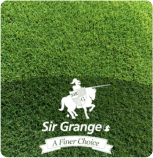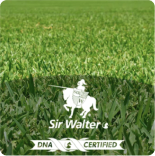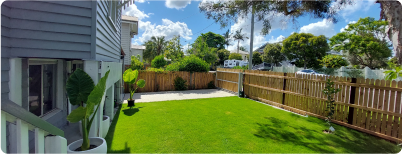Scarifying and top dressing
A lush, green lawn is the envy of every homeowner, but achieving that picture-perfect carpet of grass requires some maintenance beyond regular mowing and watering. If you're looking to take your lawn to the next level, scarifying and top dressing are two essential techniques to consider. In this blog post, we'll delve into the world of scarifying and top dressing and explain why they can be the secret to a healthier, more vibrant lawn.
What is scarifying?
Scarifying, also known as lawn dethatching or lawn aerating, is the process of mechanically removing thatch and moss from your lawn's surface. Thatch is a layer of dead grass, roots, and other organic matter that accumulates on the soil's surface over time. While some thatch is beneficial for your lawn, an excessive amount can hinder water, nutrients, and air from reaching the grass roots.
The scarifying process typically involves using a specialized machine with rotating blades or tines to cut through the thatch and create small holes or slits in the soil. This helps improve air circulation and allows nutrients and water to penetrate the soil more effectively, promoting healthier grass growth.

The Benefits of Scarifying:
-
Improved Nutrient Uptake: Scarifying opens up channels for nutrients to reach the grass roots, ensuring they receive the essential elements they need for growth.
-
Enhanced Water Absorption: Scarifying helps water penetrate the soil, reducing the risk of runoff and water wastage, especially during heavy rains or irrigation.
-
Better Aeration: Aeration of the soil through scarifying improves oxygen exchange, which is crucial for a healthy root system.
-
Thatch Removal: Excessive thatch can create a breeding ground for pests and diseases. Scarifying removes this layer, reducing the risk of lawn issues.
What is Top Dressing?
Top dressing involves spreading a thin layer of a mix of sand, soil, and organic matter over the surface of your lawn. This layer is usually a quarter to half an inch thick and is gently worked into the grass using a rake or broom. The materials used for top dressing can vary based on your lawn's specific needs, such as improving soil quality or leveling the surface.

benefits of top dressing
-
Soil Improvement: Top dressing introduces new soil and organic matter to your lawn, enriching the existing soil and promoting healthier root development.
-
Leveling: It helps level out uneven areas of your lawn, making it more aesthetically pleasing and easier to maintain.
-
Enhanced Grass Growth: The nutrients from the top dressing mixture provide essential elements for grass growth and repair.
-
Thatch Reduction: Similar to scarifying, top dressing can help break down thatch and promote its decomposition.
Timing
Both scarifying and top dressing are typically done during the early spring when grass is actively growing. This ensures that your lawn can recover and benefit from these procedures before the harsher weather arrives.
In conclusion, scarifying and top dressing are valuable techniques to rejuvenate your lawn and maintain its health and beauty. When done correctly and at the right time of year, these practices can significantly improve nutrient absorption, aeration, and overall grass growth. Consider incorporating scarifying and top dressing into your lawn care routine to achieve that lush, vibrant lawn you've always dreamed of. Your lawn will thank you with a carpet of green that's the envy of the neighborhood.















